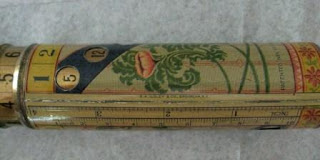Found in the Attic V: Just in time for the PGA Tour Championship
THE REDDY TEE
Although golfers were making their own tees for years, The Reddy Tee was the first commercially marketed tee. Prior to tees golfers would make piles of dirt or sand to elevate the ball.
Paper, celluloid; Nieblo MFG. Co., Inc; New York, USA; c. 1924
Box bottom – “INSIST ON THE ORIGINAL/ AND GENUINE”
U.S. Patented. May 13, 1924 – June 16, 1925 – Canada Patented – 1924/ Great Britain No. 220,866 — Other Patents Pending.
Box back – “Twelve Reasons for The Reddy Tee
6. Clean hands – Clean clothes.
7. No lost time – Always Reddy.
8. White Celluloid.
9. No wet sand to chap hands.
11. Great service – Small cost.
12. Improves poor drive –
Makes good drive better.
Tee, Golf; Box and contents
Box proper right side – “Bring a new joy to your game – / SHOOT THE HAGEN BALL/ FROM A HAGEN TEE”
Box proper left side -“The British Open and American Profes-/sional Championships were won by/ Walter Hagen with Walter Hagen clubs/ and balls./ TRY THEM.”
Box back – “KEEP YOUR EYE/ on the/ HAGEN/BALL” Images of a golf club head lining up to a tee and ball – in a box below images: “The Hagen ball bears my name/ because it is built to my specifi-/cations and I play it exclusively./ It has every quality that a cham-/pionship golf ball should have. I/ won the British Open, P.G.A.,/ and other major championships/ with it and know that its per-/formance cannot be excelled. I/ know you’ll like it.” Signature: “Walter Hagen”










